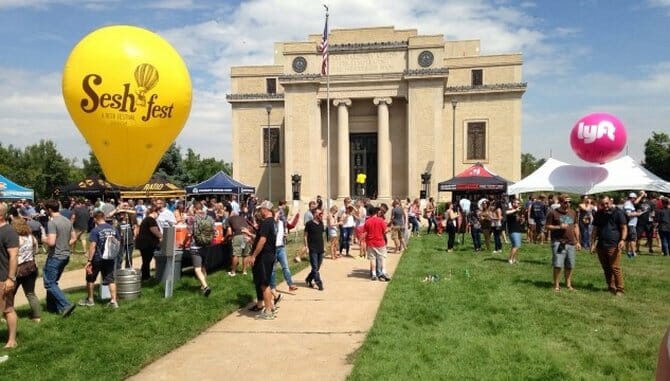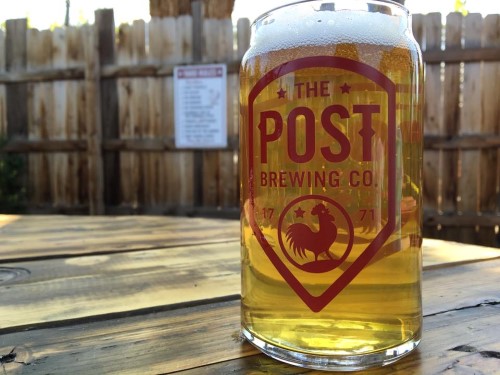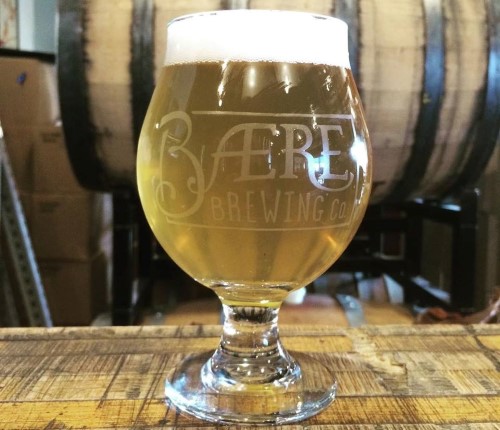Denver Breweries, Innovation and the State of “Session Beer”

Anyone who’s been paying attention to craft beer in the last few years could draw you a fairly accurate graph of the relevance and interest given to the concept of session beer. The still-ongoing rise of more sessionable styles was a natural rebound to the era of “extreme beer,” when seemingly every beer of note had become a DIPA or imperial stout. The session beer movement, then, was a response to the “bigger is better” mentality, but at the same time it’s also been a reflection of those other trends that had also come forward into the limelight at the same time—particularly the popularization of more accessible, less complicated sour beer styles.
Today, the general conception of “session beer” held in the minds of many beer geeks is still somewhat narrow, although strides are being made. Last weekend, I was fortunate enough to attend Sesh Fest, a younger Denver festival specifically themed around 5% ABV or lower session beers, currently celebrating its third year. What I saw there was encouraging, both for Denver’s own craft beer scene and for the future of session beer as an idea. Although certain examples do still tend to dominate the genre, many of the breweries I spoke with were turning either to their own creativity or a reverence for historical beer styles in their attempts to expand drinkers’ definitions of “session.”
It’s important to note here that it is indeed the rank and file craft beer drinker we’re talking about. Professional brewers, by and large, don’t need to be reminded that Vienna lager or dark mild make excellent session beer styles. But ask around in an average beer bar about what styles constitute “session beer,” and the ideas will be significantly more limited.
Session IPA, certainly, is one of the main culprits here. For many drinkers, hearing the style described with that name was the first time they even heard the word “session” enter the craft beer lexicon, so it’s only natural that it’s become intimately associated with the term. The style conquered the market nearly immediately when it appeared in numbers, piggy-backing off the “anything with IPA on the label sells” mindset and immediately surpassing the number of American pale ales being judged at GABF in its very first year. As we’ve written before, if you’re looking for concrete causes for the continued shrinking of American pale ale as a category, a significant amount of credit goes to the changes in taste reflected by the rise of session IPA, which has cannibalized that market with zombie-like vigor.
 Exhibit A
Exhibit A
In the summer of 2016, however, it’s hardly just session IPA that has been dominating the session beer market. Although session IPA might be the most visible, you’d have to go out of your way to not notice the preponderance of low-ABV, often fruited, quickly produced kettle sours on tap in almost any big craft beer market. As the best practices of making these significantly more simple (i.e., no barrels required) sours have spread throughout the industry, it’s bred an offshoot of sour beer styles that tend to be rather kinder, gentler and more approachable than the big, aggressively lactic, barrel-aged sours that still dominate the top tier of beer rating sites. They make natural summer session styles as well, with their mildly tart profiles enhancing drinkability and making them more appealing for settings like outdoor patios and beer gardens.
At the same time, though, let us not forget that session beer isn’t just a summer phenomenon, and neither is it limited to just session IPA or the current vogue of light sours. Despite your absolute definitions of “session” (some writers are intense sticklers about codifying the term), the same way that drinkers now appreciate session IPA should theoretically be reapplied to other, less sexy styles, helping them find some new life.
What styles are we talking about? Well, lagers in general are obvious candidates. In the same way that kolsch and hop-forward pilsner have been on the rise, a robust session beer market should ideally make space for more malt-forward lager styles to gain traction. The subtle toast of Vienna lager or the chewiness of a great dunkel are all too often missing from brewery lineups, even when those breweries are attempting to provide a variety of sessionable choices. Dark beer styles in general are far less frequently cited as “session” in the current market, despite having often played that role historically. Irish dry stout, by definition, is more or less always a session beer style. 4.5% ABV porter? Totally reasonable as well, and even quite refreshing when executed smartly, but still pretty rare in the session beer conversation. Even at Denver’s Sesh Fest (admittedly an outdoor fest in August), a festival devoted entirely to sub-5% ABV beer, only two of about 100 entries could actually qualify as “dark beer”: A schwarzbier (also underrepresented in the U.S.) and a coffee stout. And forgetting “dark” entirely, there’s myriad other styles that make for superb session beers: Hefeweizens, petite saisons, bitters, Scottish ales and more. The point is simple: “Session beer” as an idea continues to be embraced and grow, but it still has plenty of room to diversify itself in the minds of beer drinkers and the lineups of breweries.
In Denver, and at Sesh Fest, this thankfully does seem to be happening, at least to a degree. In the Mile-High City, one would think the physical effects of altitude might naturally lead to a more robust appreciation for camping and hiking-friendly low-ABV beer styles, and this is at least partially the case, according to a few brewers I spoke with at the event. It was an unusually smooth, easygoing beer festival, and it would be hard to deny that the concept isn’t great, as a session beer fest can simultaneously encourage eclectic sampling and relative moderation. Eric Nichols, the head brewer at Beryl’s Beer Co. in Denver’s beer-rich River North neighborhood, said the event was indicative of the session beer culture that has grown in the city during the two years that Beryl has been in operation.
“I think if you live here, more than the altitude, it’s the active lifestyles you tend to find in Colorado that are driving session beer here,” Nichols said. “Most people here aren’t drinking to get blitzed, and they’re very outdoor-focused. Session styles are perfect to incorporate into that.”
At the festival, Beryl stood out for being one of the breweries offering a style that not a single other brewery had brought along—in this case, their O.G. Dunkel. Bready, full of flavor but still quaffable on an 80-degree sunny day in the Rockies, it was the kind of session beer I’d be thrilled to get my hands on at any time of the year. Nichols, meanwhile, found himself attracted to the myriad sours of the festival.
-

-

-

-

-

-

-

-

-

-

-

-

-

-

-

-

-

-

-

-

-

-

-

-

-

-

-

-

-

-

-

-

-

-

-

-

-

-

-

-










































